
Hot tag
Popular search
How to DIY a Shortened 20 thru 40 Meter Vertical for POTA
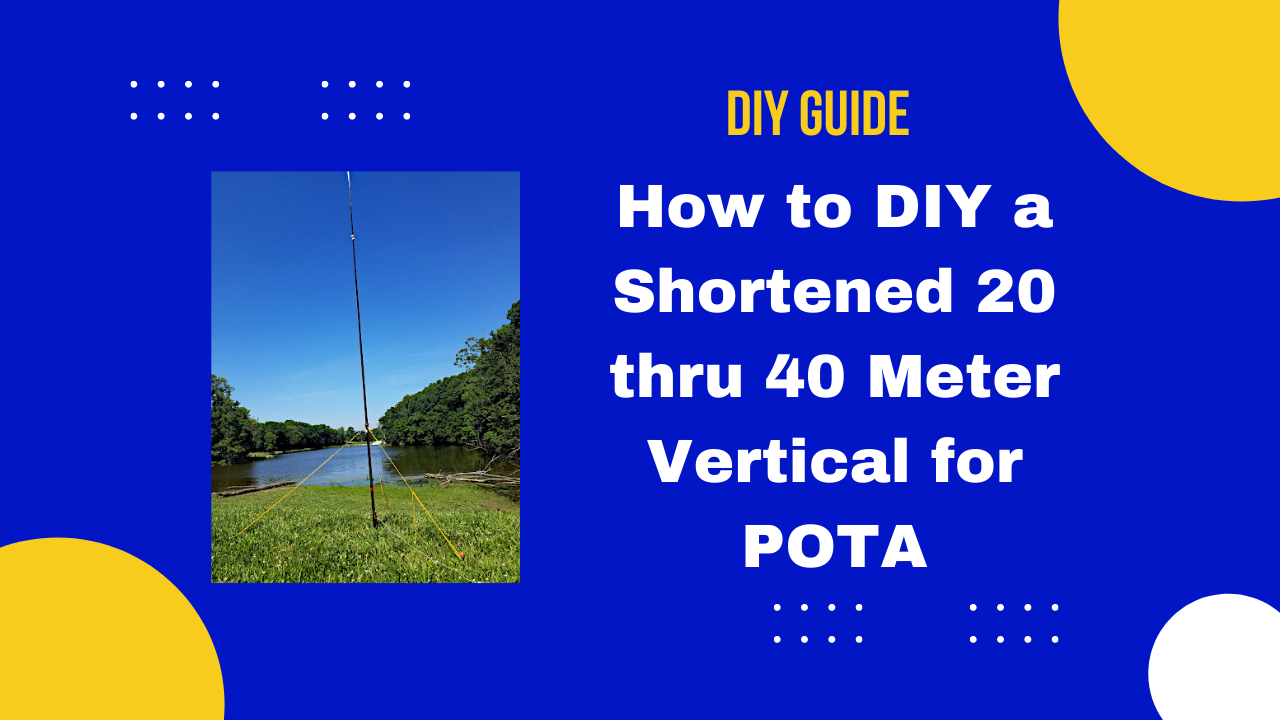
There is something interesting about doing a POTA activation where you trek in with all your gear in a pack and also trigger a park running QRP power. Given my original post concerning my initial QCX-mini QRP transceiver, I currently have extra QCX-mini's that permit me to work my POTA QRP activations on 40, 30, and 20 meters. This meant I needed to construct a mobile reduced vertical for these bands. This particular upright antenna construct is based on my initial Reduced 40 Meter Vertical yet with the addition of having the ability to short the loading coil at the proper tap factor for vibration on the 30 as well as 20-meter bands.
One issue I had with the initial 40-meter upright antenna, was that I made use of two 1/4 wave radials, which traditional wisdom says you must make use of with upright antennas. At 40 meters, they are around 33 feet long. That makes it more difficult to release the radials when in a heavily woody POTA activation.
In doing some web searches I uncovered that it is possible to make use of radials that are 1/8 wavelength long-- Yeah it appears insane to me as well, but if it's true, after that it would greatly help the radial implementation issue on 40 meters. Provided a lowered efficiency, but I figured it deserved a shot. Much more on this later.
Given that I currently had a 20-foot collapsible fishing pole for my 40-meter shortened upright, that is what I utilized for this multiband antenna. Considering that this was mosting likely to be for 3 bands, I desired the loading coil reduced enough to make sure that I might quickly make a band modification without reducing the vertical. Again, I went over to the coil shortened vertical antenna calculator web page which offered me my beginning factors for the filling coil. Tuning this antenna for all 3 bands appeared trickier than normal. My guess is that I am making use of only two 1/8 wave radials.
The diagram below is my final dimensions. Your gas mileage might vary, however, this is what I ended up with.
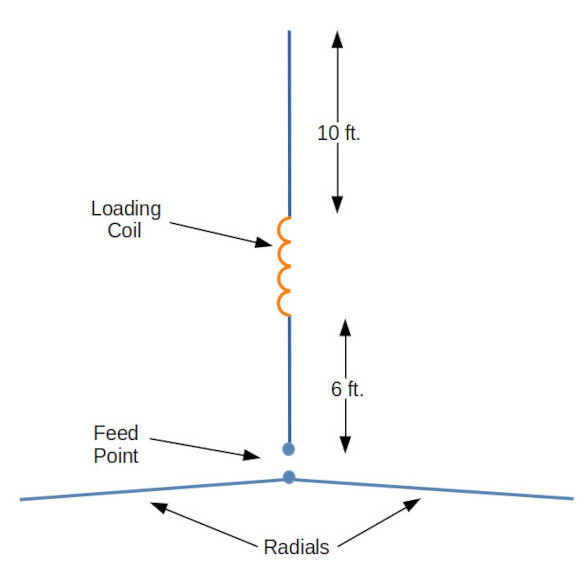
For the filling coil kind, I determined to make use of an In Sink Tailpiece. My thinking is this, normally people use a common PVC pipeline for the coil kind, which is great, yet the wall surface density of the pipeline appears needlessly thick for my application. My major issue here was to place much less stress and anxiety on the wire that is the vertical component of the antenna. A commode overflow tube is much thinner and lighter and functions simply great. The outdoor diameter of my overflow tube is 1.5 inches. I am thinking that is a normal outdoor size. I cut the Sink Tailpiece 3 1/2 inches long, but 2 1/2 ″ would have worked just great.
I made use of the coil reduced upright antenna calculator based upon where the coil is to be found in the above layout and also generated an overall number of turns of 33 with a faucet at 13 turns from the top of the coil. If you have a different gage cord, put that in the coil shortened vertical antenna calculator rather.
Originally I constructed the loading coil with the calculated variety of turns. As it ended up, I needed more inductance. In the image on the following page you can see at the top of the last turn I included a lot more cable. Lesson learned wind extra cord on the coil than determined.
Below is a photo of the filling coil made from the overflow tube:
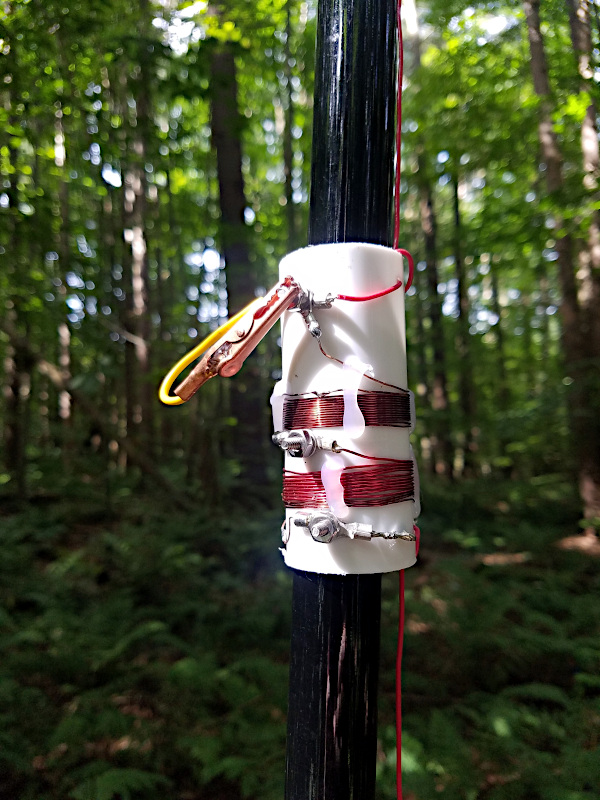
To make the filling coil, I pierced three openings for 6-32 stainless screws 3/4 of an inch long. I used crimp connectors to connect the enamel cable with the screws. When utilizing an enamel cable, see to it you remove the insulation from the wire. After that make use of ring-type kink adapters to attach to the screw. In this kind of application, I such as to solder the kink adapters to the cord. This guarantees a great link and also is a lot more immune to corrosion when utilized outdoors. In addition, I use two nuts on each screw which avoids them from loosening up during use. Notification of the white vertical blobs on the coils. I utilized hot-melt glue to keep the coils from walking around after tuning. It's not quite, however it's functional.
To change bands, I just relocate the alligator clip. As revealed, none of the coils is shorted out. This is for the 40-meter band. For the 30-meter band, just move the alligator clip down to the screw in between both coils. For 20 meters, move the alligator clip-down screw, which shorts out the entire coil.
As I stated earlier, I make use of a 20-foot collapsible fishing rod for the assistance mast of the shortened upright antenna. I desired it to be self-supporting, so it requires some sort of guying plan. I came across K6ARK's youtube channel. Particularly his video labeled SOTA/Wire Portable Telescopic Post Setup. is the ideal service. I made a couple of very small adjustments, but the idea is the same. The picture listed below programs the end outcome.
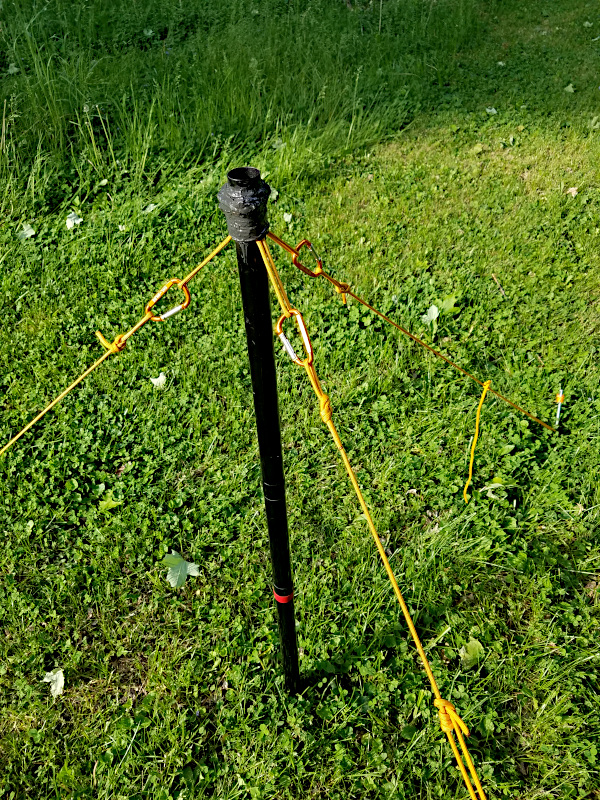
For a great description watch K6ARK's video clip:
The epoxy adhesive he probably used was good old JB Weld. That is what I used, and it works fantastic. One more point I did various was I didn't utilize the "Figure 9's". Possibly I'm also economical to buy them. Directly I like to make use of the good old taut-line hitch for my individual lines. It's really a very easy knot to learn. Here is a web link to a youtube video clip on how to tie a Taut-line Hitch. My thinking is this, considering that I recognize just how to tie a taut-line drawback, I can utilize any kind of rope for an individual line. So if I lose one of my guy lines, I can simply grab an additional item of paracord and also I stay in business.
Right here is a closeup of the taut-line hitch:
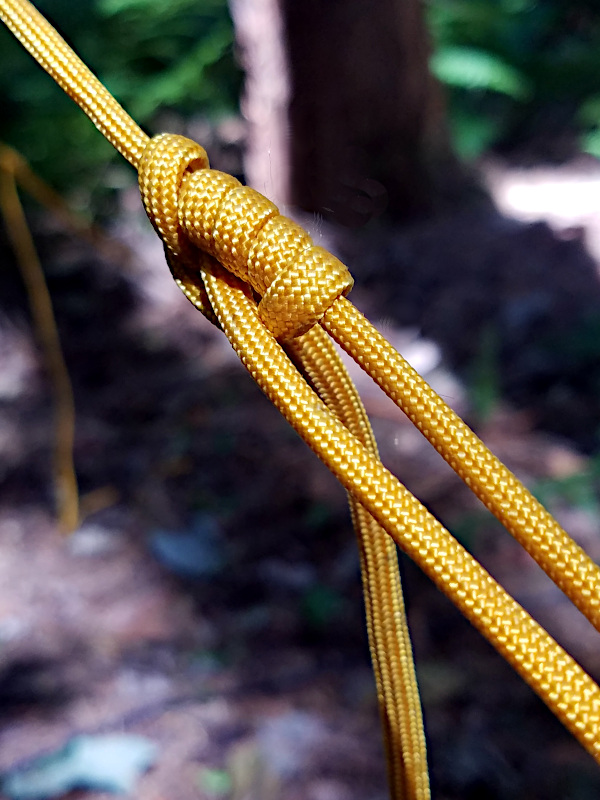
One thing I do is as soon as I have tied the taut-line drawback the first time, I don't unknot it. I simply un-clip the carabiners from the pole and also end up the man lines with the taut-line hitch intact. In this way the next time I use the shortened 40 meters upright, the guy lines are ready to go. This is what K6ARK makes with the Figure-9s that he utilizes.
When establishing my 40 30 20 meters shortened vertical, I have actually located that its finest to run the fishing rod through the facility of the coil. This decreases flexing and stress on the fishing pole. Another thing I have actually done is I classified the one end of the filling coil as "top". This is an outcome of my putting the packing coil upside-down a number of times when establishing it up.
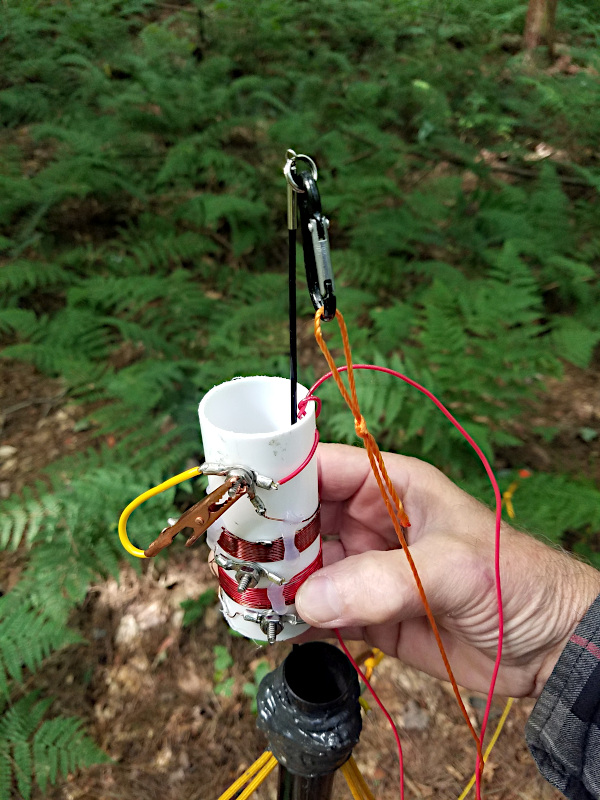
At the end of the fishing rod, I have a plastic box with a DO IT YOURSELF 1:1 balun as received in the picture listed below. The yellow wires are my 2 radials that clip on the sides of the package. This setup makes it fast and very easy to release the radials. I additionally have velcro bands coming off of the screws on the side of the plastic box. This wraps around the base of the fishing rod.
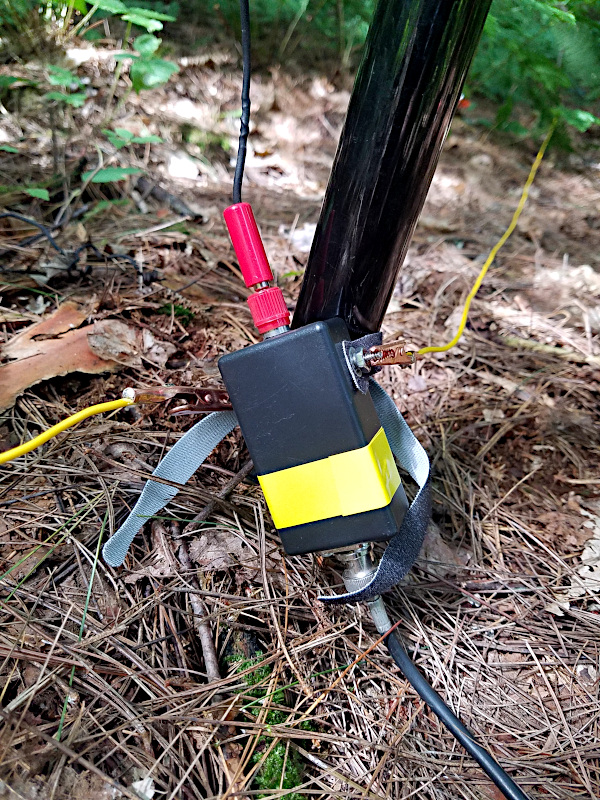
As stated earlier, inside the plastic box is a 1:1 balun. Here is the within the plastic box:
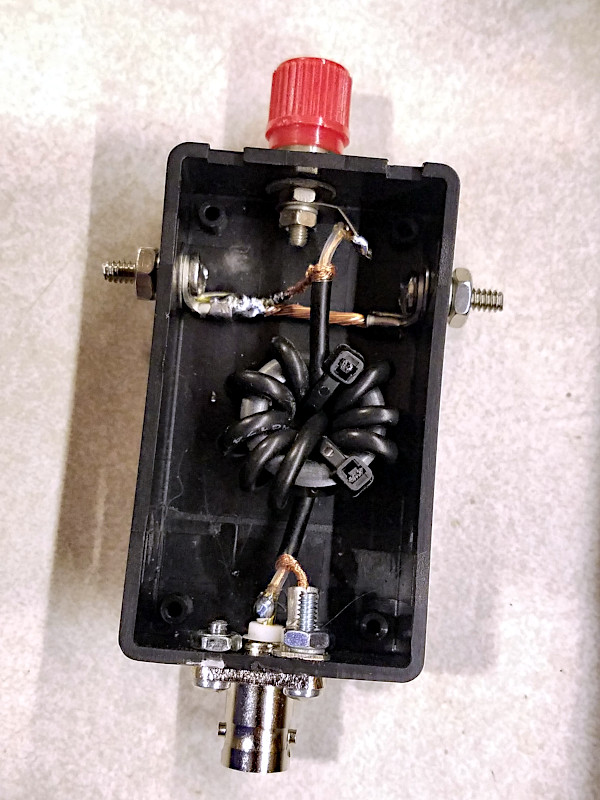
The balun utilizes RG-174 coax and it has 9 turns on a Kind 43 ferrite core that has an O.D. of 0.825 inches.
As discussed previously, it was a bit cumbersome to handle 40 meters 1/4 wavelength radials in a forest setup. Doing some net looking, I uncovered that 1/8 wavelength radials for an upright antenna are a possibility. Right here are a number of references I found by people much smarter than I on this subject:
Radial System Design and Efficiency in HF Radials – N6LF
Vertical antenna systems, losses, and efficiency – N1FD
So I believed I would give 1/8 wavelength radials a shot. Rather than having 33-foot radials, I would certainly have 16.5-foot radials. Additionally, I was just posting likely to use two radials. I recognize this is quite less than optimum. But I considered it extra difficult to see if this would really work.
One huge trouble with a cable antenna when portable, is storage space and how to quickly/ easily deploy it. Having actually tried a couple of different methods and a few web searches, I found W3ATB's site where he defines using a woodworker's chalk reel. Yet not just any chalk reel, but an Irwin Devices Speedlite chalk reel with a 3:1 gear proportion. I will not explain below, as he does an exceptional job clarifying the teardown and alteration of this gizmo for use as wire storage and quick deployment for antennas.
Right here is an image of my Irwin Speedlite 3:1 chalk reel. It holds 16.5 feet of wire for one of my radials well.
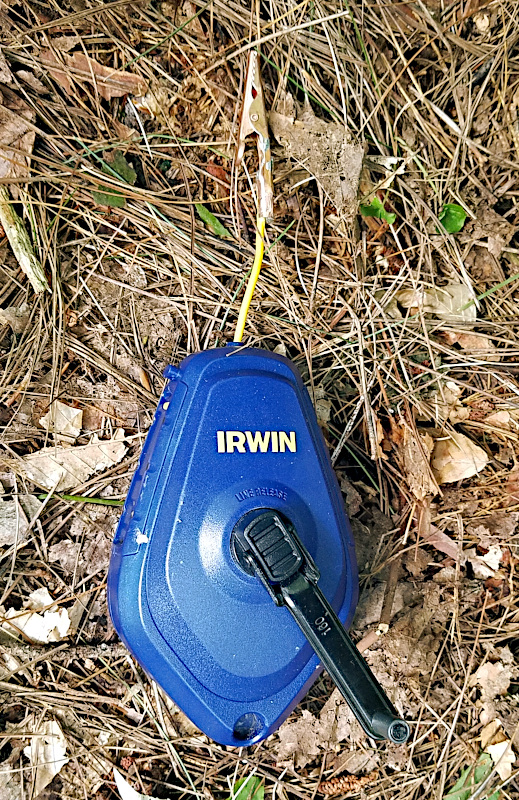
For storage space of the upright element of my 40/ 30/ 20 meter vertical. I used a scrap piece of wood 7 inches long and also cut a notch at each end. I then cover the cable lengthwise. The photo listed below programs what I thought of. I was worried that the packing coil would obtain bumped around and potentially damaged while lugging it in a pack.
Additionally, see the yellow cable. Given that the collapsable fishing rod I made use of is 20 feet long, as well as 1/4 wavelength on 20 meters is 16.5 feet, the yellow cord, which is 3 1/2 feet long, is attached to the top of the fishing rod and the red cord is connected to it. This places my balun on the ground when the fishing rod is totally expanded.
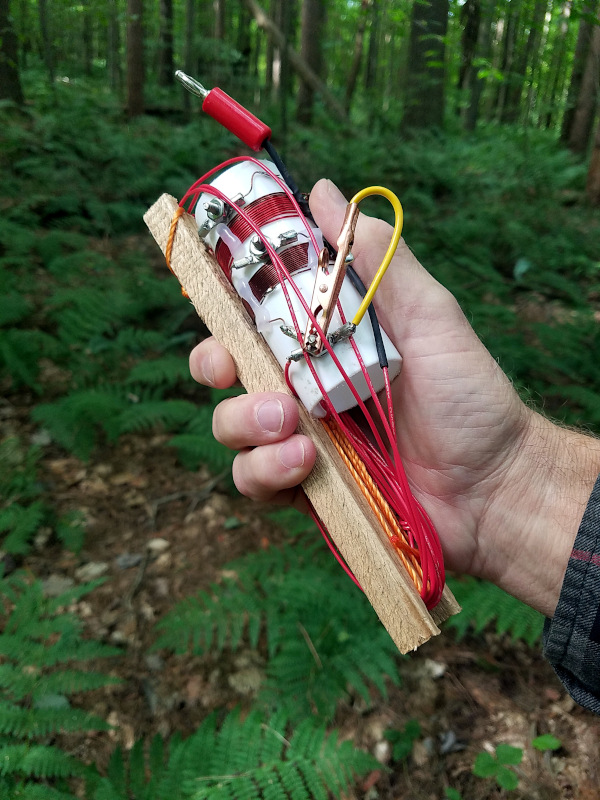
So I posted likely to the neighborhood Walmart seeking an item that had a round plastic container that this would suit-- as well as I discovered it-- around a cylinder of infant wipes! At home, I had some packaging material from some electronics I had actually obtained that is some kind of shut cell foam. I utilized that to line the inside of the cylinder Below is a picture of the vertical aspect being packed into its storage container.
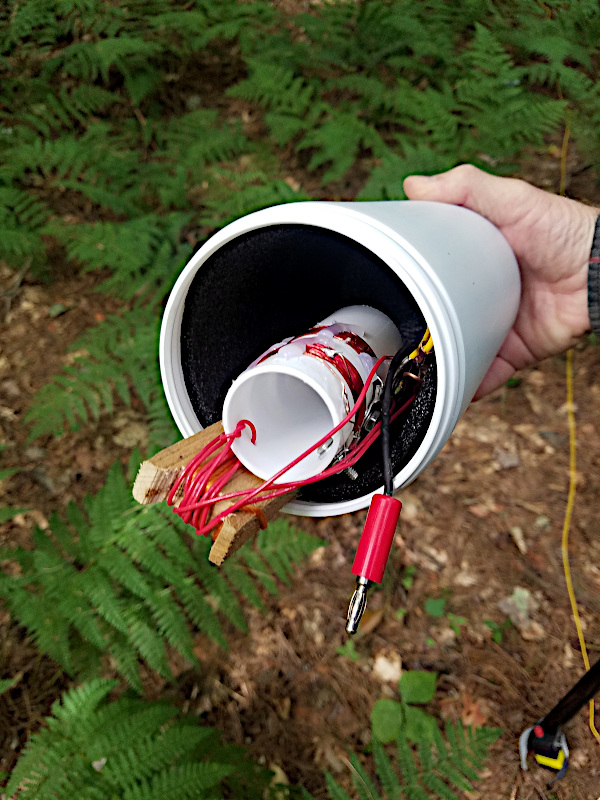
Right here is another picture of the antenna in the canister prepared to place the lid on.
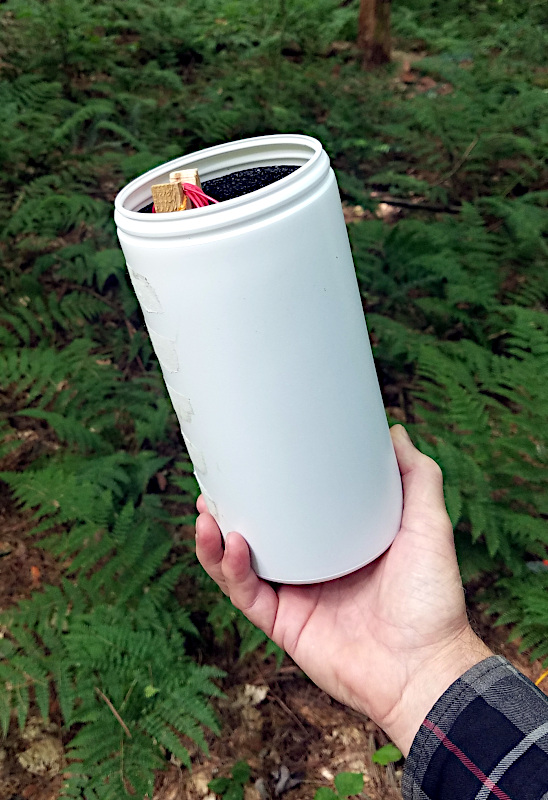
Tuning the antenna can be a little bit tricky however it can be done. Having a NanoVNA antenna analyzer helps a lot. The first point to do is see to it both radials are reduced to 16 1/2 feet long. The following start with 20 meters by totally shorting out the filling coil. Normally a quarter-wave upright for 20 meters is around 16 1/2 feet. I started out with 17 feet recognizing that this was too long. It's easier to shorten an antenna that is as well long than to add length. Given that the fishing rod that is made use of for sustaining the antenna is 20 feet long, I added 3 1/2 feet of a leftover chalk line to the top of the vertical wire. This way when the 20-meter length is at its last size, I can adjust the total size of the antenna to make sure that the balun rests on the ground.
Next tune the antenna to 30 meters. Start by putting the shorting clip to the screw that is in between the two coils. Check for vibration. if it's low by a great deal, take off a turn as well as re-check. If it's low by a little, simply different 1 or 2 turns of the un-shorted section of the coil. Doing so minimizes the inductance of the coil by less than getting rid of a turn.
When satisfied with 30 meters, return and also examine 20 meters. When every little thing was great on 30 meters I took some hot-melt adhesive and also applied it perpendicular to the instructions of the coils to maintain them in place.
Lastly for 40 meters, relocate the shorting clip to the top screw, which makes use of the entire packing coil. Repeat the adjusting process as previously. When completed, apply hot-melt adhesive to the 40 meters relies on to protect them in position.
The first time I used this antenna was when I triggered the Clearfork Canyon Nature Preserve, K-9398 utilizing my QCX-mini transceivers. Below is an image of the vertical antenna established at the gorge during the activation.
Its type difficult to see the antenna. I use yellow paracord for the man lines which helps to see where the antenna is.
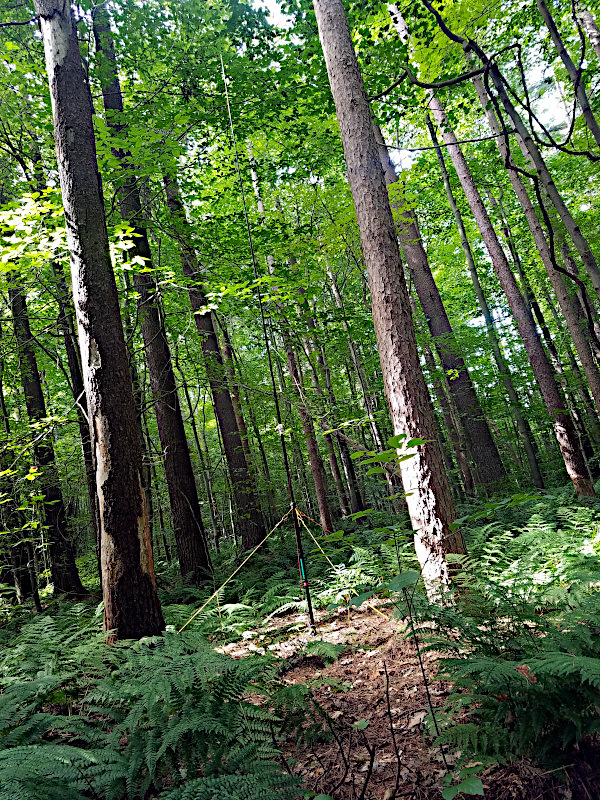
The outcomes? I am pleased with this antenna. Despite its concessions, it works well-- even running QRP. In my initial activation with it, I made 15 QSOs on 40 and 20 meters. I typically get 569 reports while running 5 watts.
Tags
Contents
Related Articles
CONTACT US


FMUSER INTERNATIONAL GROUP LIMITED.
We are always providing our customers with reliable products and considerate services.
If you would like to keep touch with us directly, please go to contact us




